A) the Bonneville Salt Flats of Utah
B) the Channeled Scablands
C) enormous potholes carved into bedrock
D) enormous ripples hundreds of feet high
E) All of these.
G) C) and E)
Correct Answer

verified
Correct Answer
verified
Multiple Choice
The most striking feature of the Pleistocene Epoch was
A) the near-total absence of glaciers and ice on Earth.
B) the expansion of glaciers and ice on Earth.
C) the expansion of mountain glaciers but retreat of continental glaciers around the world.
D) the expansion of continental glaciers but retreat of mountain glaciers around the world.
F) A) and B)
Correct Answer

verified
Correct Answer
verified
Multiple Choice
When the upper surface of the open ocean freezes, the feature produced is called
A) sea ice, composed mostly of fresh water.
B) sea ice, composed mostly of salty water.
C) ice calving, composed mostly of fresh water.
D) ice calving, composed mostly of salty water.
F) A) and C)
Correct Answer

verified
Correct Answer
verified
Multiple Choice
What is the origin of smooth troughs cutting across the landscape in the Great Lakes area?
A) The areas were covered by soft marine sediments.
B) A huge flood coming from Iowa flowed toward the Great Lakes.
C) Glaciers carved the smooth troughs.
D) All of these.
F) A) and C)
Correct Answer

verified
Correct Answer
verified
Multiple Choice
What is this bowl-shaped, glacially carved feature? 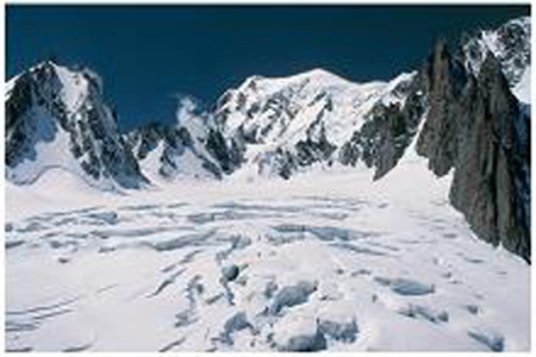
A) hanging valley
B) arête
C) cirque
D) continental ice sheet
F) A) and B)
Correct Answer

verified
Correct Answer
verified
Multiple Choice
If all the ice on the planet melted, how much would it cause global sea level to rise? If you do not remember the approximate size of this rise, the volume of ice is 32,000,000 km3 and the surface area of the world's ocean is 361,000,000 km2.
A) less than 10 centimeters
B) 10 centimeters to 1 meter
C) 1 meter to 10 meters
D) 10 meters to 100 meters
E) more than 100 meters
G) A) and D)
Correct Answer

verified
Correct Answer
verified
Multiple Choice
What is the feature numbered 2 on this photograph? 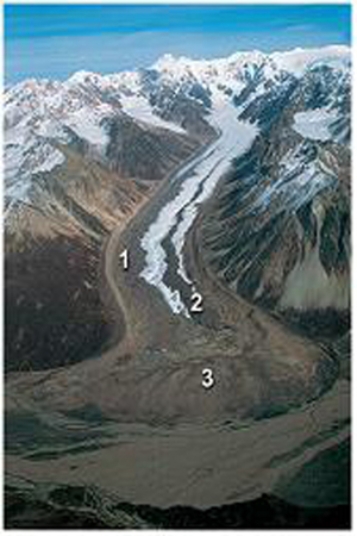
A) medial moraine
B) terminal moraine
C) recessional moraine
D) esker
E) kettle
G) C) and E)
Correct Answer

verified
Correct Answer
verified
Multiple Choice
Which of the numbered features is a lateral moraine? 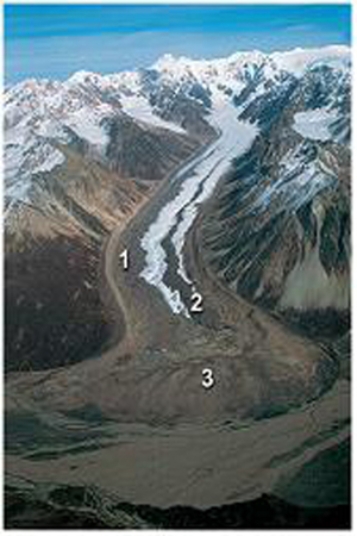
A) 1
B) 2
C) 3
D) 1 and 3
F) B) and C)
Correct Answer

verified
Correct Answer
verified
Multiple Choice
The present-day tilt of earth's axis of rotation is 23.5.What would be a result of less tilt, as shown here? 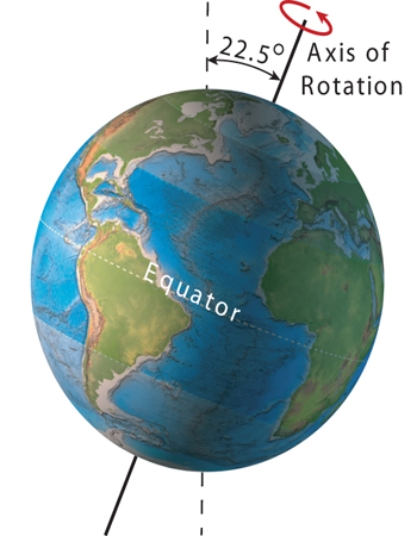
A) high latitudes would receive less direct sunlight during the summer, causing cooler temperatures
B) a decrease in glaciers
C) more hours of sunlight on the equator, resulting in warmer global temperatures
D) All of these.
F) A) and C)
Correct Answer

verified
Correct Answer
verified
Multiple Choice
What name best describes the area of the lake in this photograph? 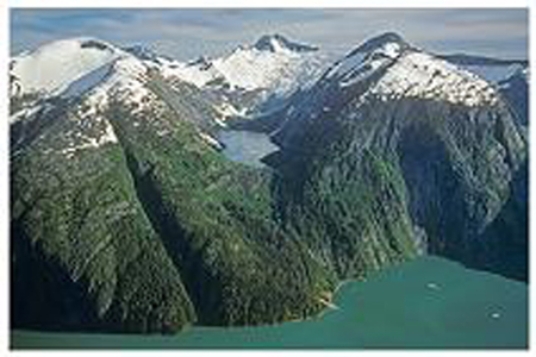
A) terminal moraine
B) equilibrium line
C) fjord
D) lateral moraine
E) drumlin
G) A) and B)
Correct Answer

verified
Correct Answer
verified
Multiple Choice
What would happen to global sea levels if all the ice in West Antarctica melts?
A) It would not change because the volume of water you get from melting ice is only slightly more than the volume of the ice.
B) It would not change because the volume of water you get from melting ice is only slightly less than the volume of the ice.
C) Sea level would fall because of isostatic rebound.
D) Sea level would rise by a significant amount.
F) None of the above
Correct Answer

verified
Correct Answer
verified
Multiple Choice
The feature in the photograph below was formed by 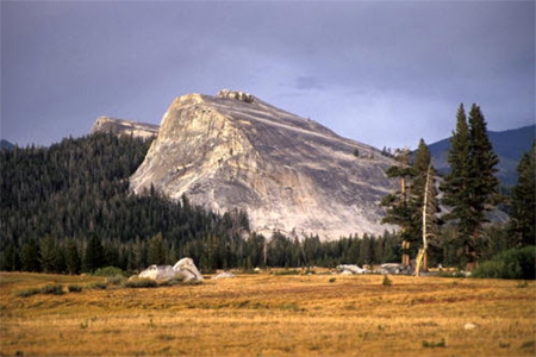
A) plucking.
B) abrasion.
C) plucking on the left and abrasion on the right.
D) abrasion on the left and plucking on the right.
F) B) and D)
Correct Answer

verified
Correct Answer
verified
Multiple Choice
The steep cliff in the foreground of the photograph below is called a(n) 
A) tarn.
B) icefall.
C) col.
D) nunatak.
F) None of the above
Correct Answer

verified
Correct Answer
verified
Multiple Choice
What is the feature numbered 3 on this photograph? 
A) medial moraine
B) terminal moraine
C) recessional moraine
D) esker
E) kettle
G) B) and E)
Correct Answer

verified
Correct Answer
verified
Multiple Choice
What is the relationship between plucking and abrasion on a glacially-scoured landscape?
A) Plucking occurs relatively suddenly when a glacier first encounters the landscape, and then if it remains in place for a long time, abrasion begins to happen later, over a long period of time.
B) Abrasion occurs relatively suddenly when a glacier first encounters the landscape, and then if it remains in place for a long time, plucking begins to happen later, over a long period of time.
C) Plucking occurs on the upflow side of a mound or hill that is scoured, while abrasion occurs on the downflow side.
D) Abrasion occurs on the upflow side of a mound or hill that is scoured, while plucking occurs on the downflow side.
F) All of the above
Correct Answer

verified
Correct Answer
verified
Multiple Choice
The exposed bedrock in the background of the figure below, to the right, formed as 
A) isostatic rebound caused the land to extend upward.
B) particularly resistant rock and/or thin ice left the rock above the ice surface.
C) a mantle hot spot melted the glacier in this localized area.
D) local wind-blown deposition concentrated in this area of the glacier.
F) None of the above
Correct Answer

verified
Correct Answer
verified
Multiple Choice
The primary reason that this feature formed is that 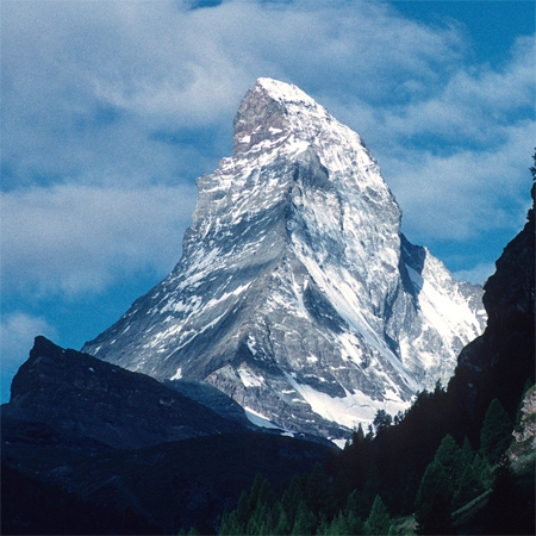
A) abrasion occurred on all sides, without plucking.
B) three or more cirques merged by headward erosion.
C) precipitation at the top of the mountain ran downward very quickly.
D) a series of faults surrounded a very localized area and uplifted it.
F) A) and B)
Correct Answer

verified
Correct Answer
verified
Showing 61 - 77 of 77
Related Exams